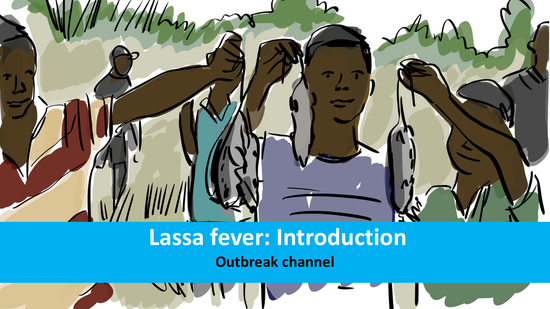
Lassa fever, a viral haemorrhagic fever with symptoms similar to those of Ebola virus disease, is endemic in much of West Africa and usually sparks a seasonal outbreak from December to March. Humans usually become infected with Lassa virus from exposure to urine and faeces of infected Mastomys rats. Lassa virus may also be spread between humans through direct contact with the blood, urine, faeces, or other bodily secretions of a person infected with Lassa fever. This course provides a general introduction to Lassa fever and is intended for personnel responding to outbreaks in complex emergencies or in settings where the basic environmental infrastructures have been damaged or destroyed.
**Please note: This course was developed in 2018. For the latest updates, please refer to the relevant health topics on the WHO website.
Язык: English
Basic (Basique), Lassa fever
Информация о курсе
La version française de ce cours est disponible sur : https://openwho.org/courses/fievre-de-lassa-introduction
Overview: Lassa fever, a viral haemorrhagic fever with symptoms similar to those of Ebola virus disease, is endemic in much of West Africa and usually sparks a seasonal outbreak from December to March. Humans usually become infected with Lassa virus from exposure to urine and faeces of infected Mastomys rats. Lassa virus may also be spread between humans through direct contact with the blood, urine, faeces, or other bodily secretions of a person infected with Lassa fever. Lassa fever occurs in all age groups and both sexes. Persons at greatest risk are those living in rural areas where Mastomys are usually found, especially in communities with poor sanitation or crowded living conditions. This course provides a general introduction to Lassa fever through a downloadable presentation that can be reviewed at your own pace and quizzes to test your knowledge. It is intended for personnel responding to outbreaks of Lassa fever in complex emergencies or in settings where the basic environmental infrastructures have been damaged or destroyed.
Learning objectives: By the end of this course, participants should be able to:
- describe signs, symptoms, and transmission routes of Lassa fever;
- list prevention and control techniques; and
- describe Lassa fever's public health challenges.
Course duration: Approximately 1 hour.
Certificates: A Confirmation of Participation is available to participants who complete at least 80% of the course materials.
Содержимое курса
Lassa fever:
This module provides an introductory-level overview of the disease.
Записаться на этот курс
Требования для получения сертификата
- Получите сертификат об участии, изучив не менее 80% учебного материала курса.